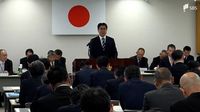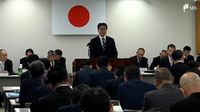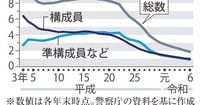On April 14, 2025, a significant police station chief conference took place at the Okayama Prefectural Police Headquarters. This gathering, which included 90 attendees comprising executives of the Okayama Prefectural Police and police chiefs from various local stations, aimed to address pressing issues related to the anonymous and mobile crime group known as Tokuryu.
The head of the Okayama Prefectural Police, Kudo Haruyo, emphasized the urgency of suppressing the Tokuryu crime group, stating, "The crackdown on Tokuryu is predicated on the apprehension of the actual perpetrators. We need to ensure the prompt arrest of the 'getaway' and 'receiver' accomplices, followed by strategic investigative efforts to pursue further leads." His comments highlighted the police's commitment to tackling the evolving tactics of organized crime.
In addition to focusing on Tokuryu, the conference also addressed the importance of enhancing traffic safety education for bicycle users and improving cybersecurity measures. These discussions reflect a broader strategy to adapt law enforcement approaches to contemporary challenges.
Meanwhile, a parallel conference was held in Shizuoka Prefecture on April 15, 2025, where local police chiefs convened to outline their priorities in combating organized and heinous crimes associated with the Tokuryu group. This meeting underscored a statewide commitment to addressing the threats posed by such criminal organizations.
According to the National Police Agency's recent report on organized crime, the number of Boryokudan members and quasi-members in Japan has reached a record low of 18,800, marking a decline of 1,600 from the previous year. This reduction is attributed to a combination of intensified law enforcement efforts and a generational shift away from organized crime. The report indicates that the number of actual members has fallen below 10,000 for the first time, with 9,900 members recorded.
The decline in organized crime is noteworthy, especially considering that the Boryokudan had over 80,000 members nationwide as recently as 2009. Factors such as the aging of existing members and the implementation of stringent anti-organized crime regulations have contributed to this trend. Local governments across Japan have enacted ordinances aimed at severing ties between organized crime and the public, making it increasingly difficult for these groups to operate.
Despite the overall decline in organized crime, the emergence of new criminal groups like Tokuryu has raised concerns among law enforcement officials. These groups are characterized by their fluid membership and reliance on modern technology, including social media, to recruit perpetrators for crimes such as fraud and organized theft. In 2024, police investigations linked 5,203 individuals to Tokuryu-associated crimes, with fraud accounting for nearly half of these cases.
In a notable case earlier this year, a Tokuryu group was implicated in defrauding a woman in her 60s in Shizuoka Prefecture of approximately 16 million yen. This incident led to the arrest of a man believed to be an executive member of the Sumiyoshi-kai, a prominent Boryokudan organization. This case exemplifies the complex interplay between traditional organized crime and emerging criminal networks.
Moreover, the National Police Agency reported that in 2024, the police apprehended 8,249 Boryokudan members and associates, which reflects a decrease of 1,361 from the previous year. The most prevalent offenses included violations of stimulant control laws (1,707 individuals), fraud (1,103), assault (1,071), and theft (713). Alarmingly, the number of murders linked to organized crime also increased, with 79 reported cases, an uptick of 23 from the previous year.
As the landscape of organized crime in Japan continues to evolve, law enforcement agencies are adapting their strategies to combat both traditional Boryokudan and newer groups like Tokuryu. The recent conferences in Okayama and Shizuoka highlight the proactive measures being taken to address these challenges and ensure public safety.
In addition to the ongoing crackdown on organized crime, there is a growing concern about the potential for Boryokudan members to infiltrate newer criminal organizations. This blending of traditional and modern crime poses unique challenges for law enforcement, as the lines between different types of criminal activity become increasingly blurred.
As the police continue their efforts to dismantle organized crime networks, they remain vigilant against the rising tide of anonymous and mobile crime groups. The emphasis on strategic investigations and early detection of perpetrators is crucial in this ongoing battle.
In summary, the recent police conferences in Okayama and Shizuoka reflect a concerted effort to tackle the challenges posed by organized crime in Japan. With a focus on both traditional Boryokudan and emerging groups like Tokuryu, law enforcement agencies are committed to adapting their strategies to ensure public safety and uphold the rule of law.








